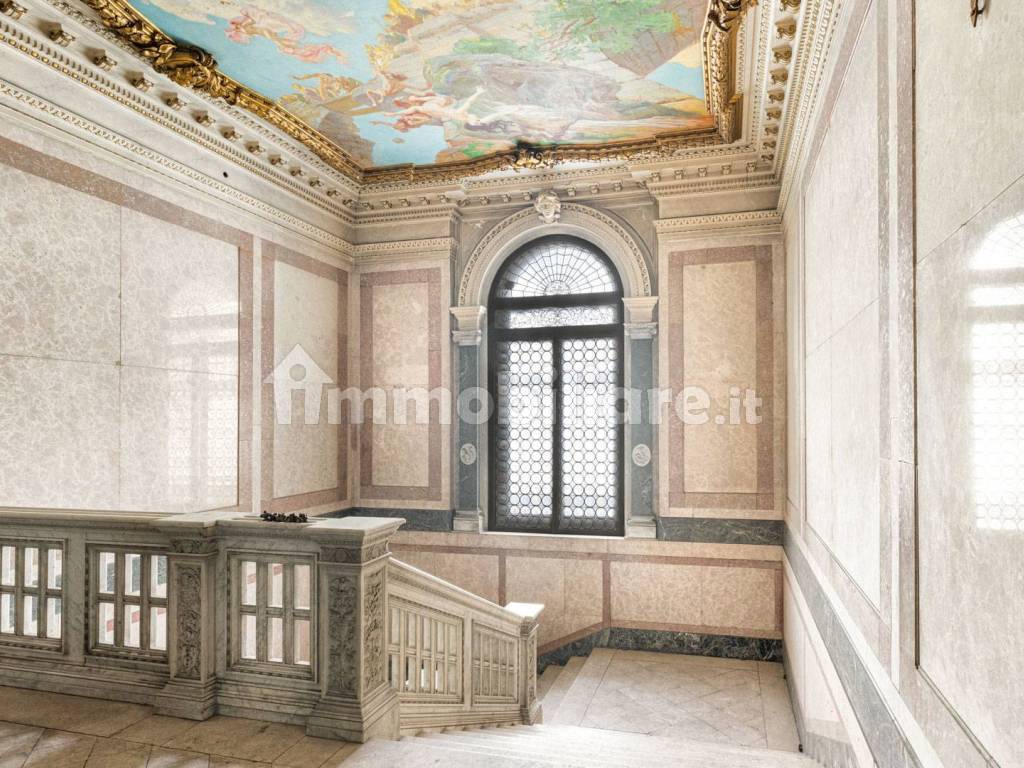1/35


Note
Listing updated on 09/03/2024
Description
This description has been translated automatically by Google Translate and may not be accurate
reference: SAPD36230-V
AN ECLECTIC STYLE PALACE FOR SALE IN TRIESTE
The architectural magnificence of the city of Trieste developed under the Austro-Hungarian Empire, which brought with it wealth, ferment in trade and cultural exchanges, causing the so-called eclectic style to explode-particularly in the architecture of the late 19th century.
Palazzo Artelli-the property we are going to present here-is one of the best examples of that style.
Next to the Palazzo del Governo in Piazza Unità d'Italia and Palazzo Gopcevich on the Grand Canal, Palazzo Artelli, built in 1906, is also inspired by the stylistic features of seventeenth-century Venetian palaces - among all of them we find in reduced dimensions Cà Rezzonico by architect Longhena.
The palace presents a typically Renaissance facade, with the sharp division into three floors marked horizontally by cornices and parapets, in which windows are repeated horizontally along the entire facade, as if to have a succession of loggias with a great three-dimensional and scenic effect.
On the ground floor, the entrance is through a large portal, divided into three by two columns, a staircase and a portico that almost go to create a kind of water gate: a monumental doorway leads to the interior of the palace.
Thus we enter the hallway, embellished with a fountain and the grand marble staircase leading to the first piano nobile.
On the second floor we find four rooms and sitting rooms facing the facade.
In the center of the building another grand staircase, this time in walnut, then leads to the second piano nobile. This floor is evidently created to surprise the guest.
One disembarks in the neoclassical hall, decorated in marble and with frescoes depicting hunting scenes; one then moves to the ballroom on the left, also identified as the Caesars' room, enriched with mosaic details that recall the taste of ancient Roman residences; the tour then leads to three more rooms, the first of which is Byzantine, the second medieval, and the third renaissance.
In addition to the rooms overlooking University Street, the property has other service rooms at the rear, as well as an attic level from which one reaches a roof-terrace with a 360-degree view of the city of Trieste.
The architectural magnificence of the city of Trieste developed under the Austro-Hungarian Empire, which brought with it wealth, ferment in trade and cultural exchanges, causing the so-called eclectic style to explode-particularly in the architecture of the late 19th century.
Palazzo Artelli-the property we are going to present here-is one of the best examples of that style.
Next to the Palazzo del Governo in Piazza Unità d'Italia and Palazzo Gopcevich on the Grand Canal, Palazzo Artelli, built in 1906, is also inspired by the stylistic features of seventeenth-century Venetian palaces - among all of them we find in reduced dimensions Cà Rezzonico by architect Longhena.
The palace presents a typically Renaissance facade, with the sharp division into three floors marked horizontally by cornices and parapets, in which windows are repeated horizontally along the entire facade, as if to have a succession of loggias with a great three-dimensional and scenic effect.
On the ground floor, the entrance is through a large portal, divided into three by two columns, a staircase and a portico that almost go to create a kind of water gate: a monumental doorway leads to the interior of the palace.
Thus we enter the hallway, embellished with a fountain and the grand marble staircase leading to the first piano nobile.
On the second floor we find four rooms and sitting rooms facing the facade.
In the center of the building another grand staircase, this time in walnut, then leads to the second piano nobile. This floor is evidently created to surprise the guest.
One disembarks in the neoclassical hall, decorated in marble and with frescoes depicting hunting scenes; one then moves to the ballroom on the left, also identified as the Caesars' room, enriched with mosaic details that recall the taste of ancient Roman residences; the tour then leads to three more rooms, the first of which is Byzantine, the second medieval, and the third renaissance.
In addition to the rooms overlooking University Street, the property has other service rooms at the rear, as well as an attic level from which one reaches a roof-terrace with a 360-degree view of the city of Trieste.
If you want to know more, you can talk to Padova Santandrea.
Features
- Contract
- Sale
- Type
- Building
- Surface
- 1,490 m²
- Rooms
- 5+ rooms
- Floor
- 1°
- Total building floors
- 1 floor
- Car parking
- 1 in shared parking
- Availability
- Available
- Current building use
- Residential
Other features
- 5 balconies
Surface detail
Other
- Floor
- 1
- Surface
- 1,490.0 m²
- Coefficient
- 100%
- Surface type
- Main
- Commercial area
- 1,490.0 m²
Price information
- Price
- Price on application
Floorplan
Additional options
Padova Santandrea






































